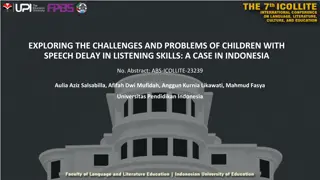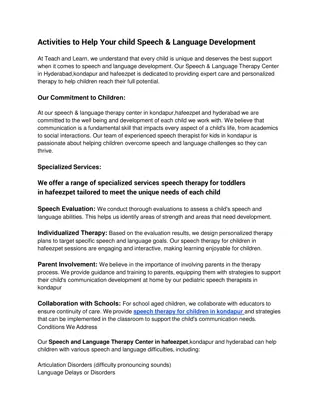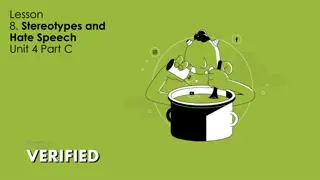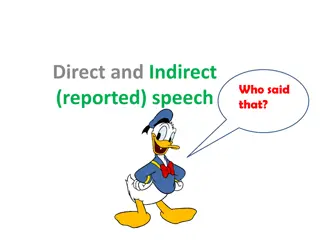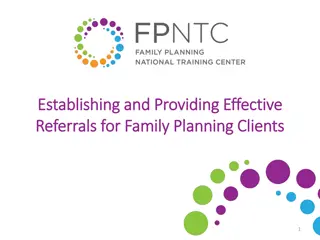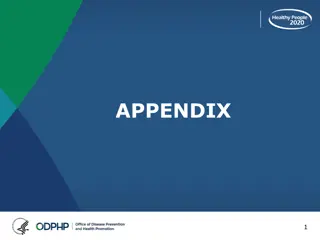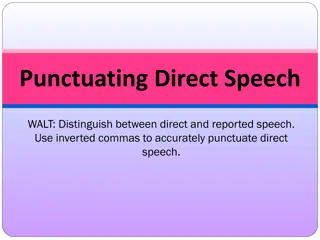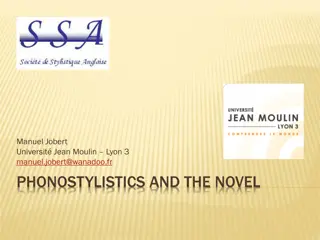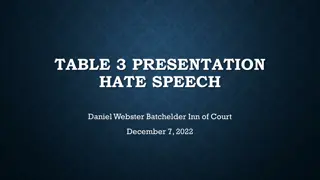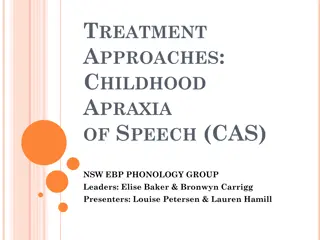Speech and Language Therapy Referrals and Challenges in Educational Settings
Explore the importance of speech and language therapy referrals for children aged 3-11, addressing issues, challenges, and the impact of language difficulties on academic achievement and social development. Discover the role of schools and speech therapy in supporting language development, and how language skills underpin educational progress and future life chances.
Download Presentation

Please find below an Image/Link to download the presentation.
The content on the website is provided AS IS for your information and personal use only. It may not be sold, licensed, or shared on other websites without obtaining consent from the author.If you encounter any issues during the download, it is possible that the publisher has removed the file from their server.
You are allowed to download the files provided on this website for personal or commercial use, subject to the condition that they are used lawfully. All files are the property of their respective owners.
The content on the website is provided AS IS for your information and personal use only. It may not be sold, licensed, or shared on other websites without obtaining consent from the author.
E N D
Presentation Transcript
Speech and Language Therapy language referrals into service, 3-11 years Sylvia Davie & Fiona Davies Wirral Community Health and Care NHS Foundation trust
Topics to be covered today Issues and challenges Universal, targeted, specialist level input Referring to SALT Referral booklet how to use it Referral guide and criteria Referral form What happens next Episodic working in SLT Training Parent drop-ins Language base criteria and referrals
The impact . Lower academic achievement More likely to be socially isolated and be bullied More likely to develop behavioural difficulties High incidence of language difficulties in young offenders Stronger likelihood of mental health problems in adulthood
Challenges for schools and speech and language therapy Staff numbers Class size Numbers of children needing support Funding Limited availability of SLT
Language opens doors! It unlocks the world of reading and the imagination, the excitement of writing, the capacity to explore new subjects, and releases our potential to learn and grow as an individual. In schools it underpins progress, impacts on attainment through primary and secondary years, affects self esteem and behaviour and plays a huge role in a child s future life chances .. Language is at the heart of education and we believe that more needs to be done to address the issue throughout school and give teachers support to make a difference to those children s lives. Jane Harley, Strategy Director for UK Education at Oxford University Press High quality classroom talk is a key factor in improving pupil engagement and outcomes Ofsted annual report 2009/2010
Who needs support from SLT? Universal / Targeted / Specialist input What does this mean?
SLCN includes a wide range of needs that require different levels and types of provision Universal input is for all, i.e. a whole class / school approach, ensuring all children have appropriate language and communication opportunities. Staff training and development Creating communication friendly environments Whole class / school intervention approaches
Targeted input provides specific support for children with delayed language and communication skills. Language groups Narrative groups Social skills groups Speech sound programmes
Specialist input is in addition to the universal and targeted input for children who require a highly individualised programme of work. Children with complex learning and communication needs Children with developmental language disorder.
Referral Guide for children in school aged 3-11 years with Speech, Language and Communication difficulties Starting point: Look at referral booklet below for the child s chronological age and see if the child is at green, amber or red for the area you are concerned with. If they are green on the table this is age appropriate so do not worry! If they are amber look at the white column where you will find interventions to carry out in school to support the child s development. Provide input then review their progress after at least a term. Then check with the referral booklet again. If there has been no progress then refer to SLT. If the child comes out on red then refer to SLT but carry out interventions from the white column while waiting for child to be seen.
Making a SALT referral Speech and Language Therapy referral form to be completed with evidence of interventions attached. For children aged 7 years and under, all referrals for language and/or social communication concerns must include a full Wellcomm screen. Referrals will be rejected if Wellcomm screens are not completed and attached. For all children for social communication concerns a social communication questionnaire must be completed by setting and parent/carer.
Refer straightaway if concerns about:- Selective Mutism A specific predictable pattern of not talking which has persisted for at least one month (two months in a new environment) A marked contrast between a) talking and interacting freely with people in the child s comfort zone and b) avoidance, non-verbal communication, minimal verbal response or total lack of vocalisation with other people. A visible freeze (increased body-tension and fixed facial expression) when the child becomes aware of a person outside their comfort zone. Stammer Frequent stammers/stutters e.g. repetitions, getting stuck, lengthening of sounds Child is aware/anxious. Parent is concerned about it or there is a family history of stammering Voice disorder Child presents with a hoarse voice, periods of no voice
What happens next? If accepted child will be seen within 13 weeks of receipt of referral Episodic working, empowering parents and staff to support children s language Most children with targeted needs identified will be discharged with advice and strategies provided. New training offered for school staff Parent drop ins following discharge to support future concerns
Training What are speech, language and communication? How can we support children s speech, language and communication needs in their setting? Comprehension monitoring Verbal reasoning and Blank levels Vocabulary development Supporting expressive language difficulties Communication friendly schools
Language Bases 3 Language Resource Bases on Wirral F2 to Year 2 For children with primarily a significant expressive speech and language disorder Cognitive ability within the average range Don t have a diagnosis of ASC Main intake September; occasionally places become available during the school year Please flag up concerns as early in the school year as possible - even if child is already known to SLT
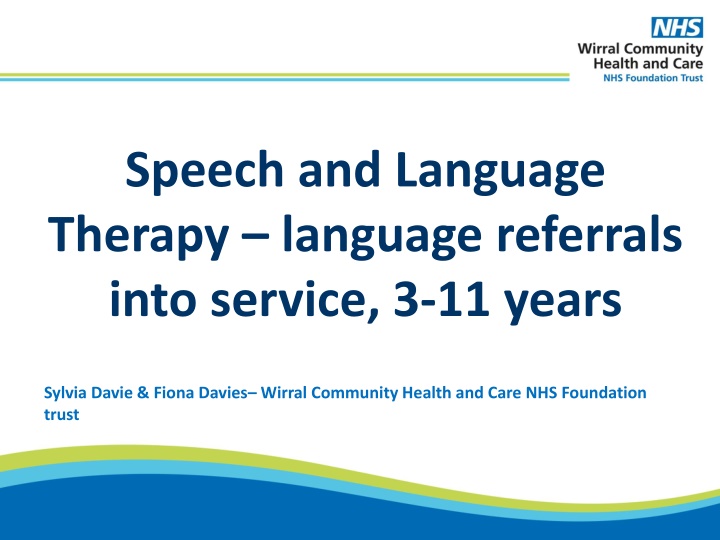


![Prevention and Combating of Hate Crimes and Hate Speech Bill [B.9B.2018]](/thumb/60513/prevention-and-combating-of-hate-crimes-and-hate-speech-bill-b-9b-2018.jpg)
